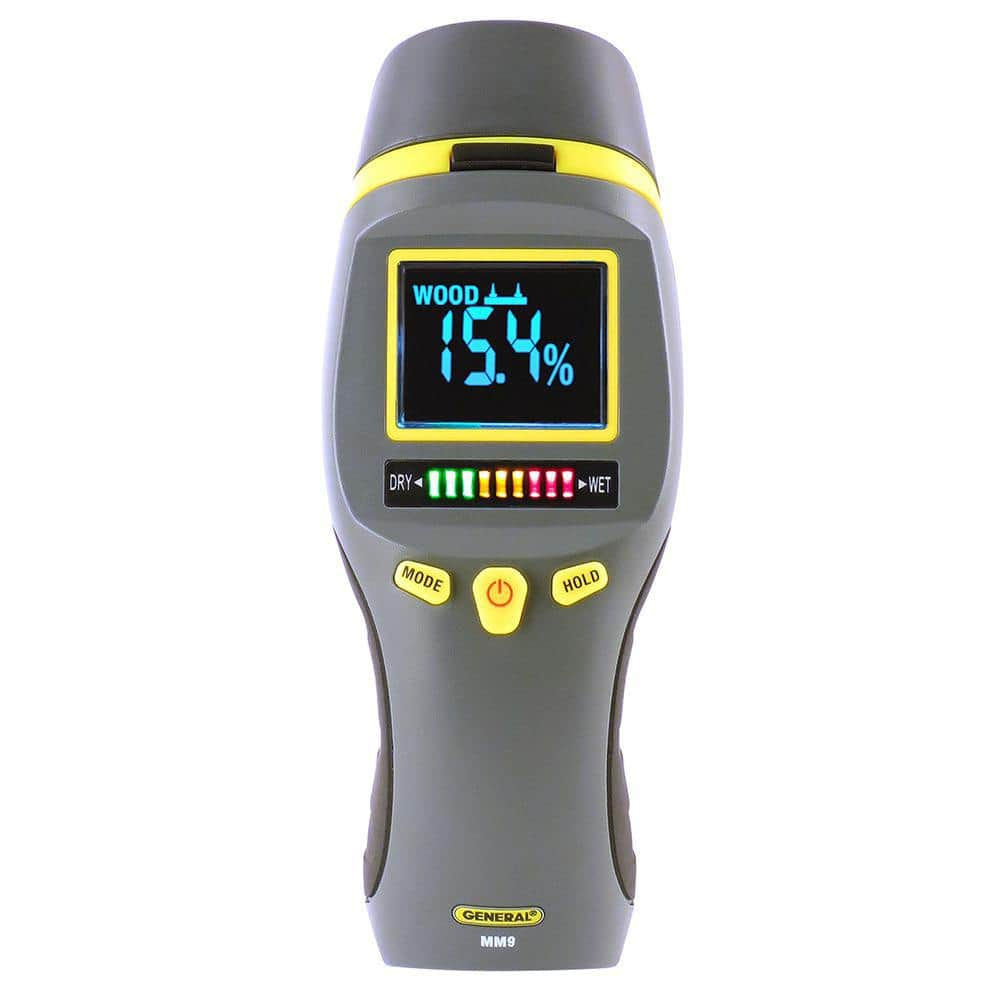The Ultimate Guide to Choosing the Right Moisture Meter for Your Requirements
The Ultimate Guide to Choosing the Right Moisture Meter for Your Requirements
Blog Article
Delve Into the Globe of Moisture Meters: Whatever You Need to Know
In the realm of wetness meters exists a world of accuracy and practicality that commonly goes unnoticed. Comprehending just how moisture meters operate, the various kinds available, and their varied usages can shed light on their value in ensuring high quality and performance.
How Moisture Meters Work
Moisture meters operate by gauging the electric conductivity or capacitance of materials to identify the dampness web content present. These meters are vital devices throughout various markets, consisting of woodworking, agriculture, and building. By using various approaches such as pinless or pin-type modern technology, moisture meters offer precise readings that assist experts make notified choices.
Pin-type moisture meters function by putting the sharp pins right into the material being tested. On the other hand, pinless dampness meters utilize electromagnetic signals to scan a bigger location without triggering any damages to the product's surface.
Despite the approach made use of, wetness meters play an important role in preventing concerns such as mold growth, architectural damage, or item flaws brought on by excess moisture. Recognizing exactly how these meters work is crucial for making sure the quality and honesty of materials in various applications.
Kinds Of Moisture Meters
Provided the critical function moisture meters play in numerous industries, it is vital to comprehend the various types readily available to experts for accurately examining moisture degrees - Moisture Meter. There are mostly 2 primary kinds of wetness meters: pinless and pin-type moisture meters

On the other hand, pinless dampness meters use electro-magnetic sensor plates to check a larger location of the product without triggering any kind of damage. This kind appropriates for promptly scanning large locations and is commonly utilized for floor covering, walls, and ceilings. Pinless meters are hassle-free for taking readings on finished surfaces without leaving any type of noticeable marks.
Both types of dampness meters have their advantages and are selected based upon the specific demands of the work at hand. Comprehending the distinctions between these types is critical for professionals to make precise dampness assessments.
Applications Across Industries
With varied capabilities, moisture meters discover prevalent application throughout various markets, helping specialists in ensuring ideal problems for products and frameworks. In the agriculture market, dampness meters are invaluable for identifying the wetness material in grains, seeds, and hay, making certain top quality control and preventing mold growth. Building experts count on wetness meters to examine the dampness degrees in structure products like concrete, timber, and drywall, which is important for preserving architectural stability and stopping problems like rot or mold. The flooring industry utilizes moisture meters to measure the moisture web content in subfloors prior to mounting different flooring, avoiding costly problems as a result of excess dampness. Additionally, in the food market, wetness meters are used to monitor and regulate moisture degrees in products such as grains, nuts, and dried fruits to maintain quality and high quality. Additionally, dampness meters play a crucial function in the restoration and damages evaluation industry by see this page aiding experts identify and resolve water damages in buildings promptly. Throughout these diverse sectors, wetness meters are indispensable devices for guaranteeing the top quality, security, and longevity of different products and products.
Tips for Making Use Of Moisture Meters
Utilize the moisture meter's calibration settings to ensure accurate analyses when gauging the dampness web content in different products. Furthermore, make sure the meter is set to the correct moisture array for the product you are determining to acquire the most accurate results.
When using a pin-type dampness meter, put the pins to the proper depth recommended for the product being examined. This makes sure that the wetness readings are taken from the proper deepness within the material, providing an extra precise representation he has a good point of its moisture web content. For pinless wetness meters, remember to keep appropriate contact with the product's surface area to get reliable analyses.
On a regular basis check and change the batteries in your moisture meter to stop unreliable readings because of reduced power. When not in use to extend its life-span and preserve its precision, Store the meter in a risk-free and completely dry area. By following these ideas, you can make the most of the efficiency of your dampness meter and obtain exact moisture material dimensions throughout different materials.
Upkeep and Calibration
To make sure the precision of wetness material dimensions, routine maintenance and calibration of the moisture meter are vital steps in its proper functioning. Calibration readjusts the dampness meter to make certain that it gives trusted and regular outcomes.
Calibration must be carried out periodically, especially if the dampness meter is made use of often or in vital applications where accurate measurements are called for. Lots of wetness meters come with calibration devices or can be adjusted by specialist solutions. Moisture Meter. It is suggested to maintain a log of calibration days and results to track the efficiency of the moisture meter with time. By keeping and adjusting the moisture meter routinely, customers can rely on the accuracy of the moisture web content measurements gotten.
Final Thought

Finally, wetness meters play a critical role in different sectors by accurately measuring the wetness web content of products. Understanding exactly how these tools function, the different types offered, and appropriate upkeep and calibration are essential for obtaining trustworthy outcomes. Whether in farming, building and construction, or production, making use of moisture meters helps guarantee quality assurance and effectiveness in processes.

In conclusion, wetness meters play a vital function in different markets by accurately measuring explanation the dampness material of materials.
Report this page